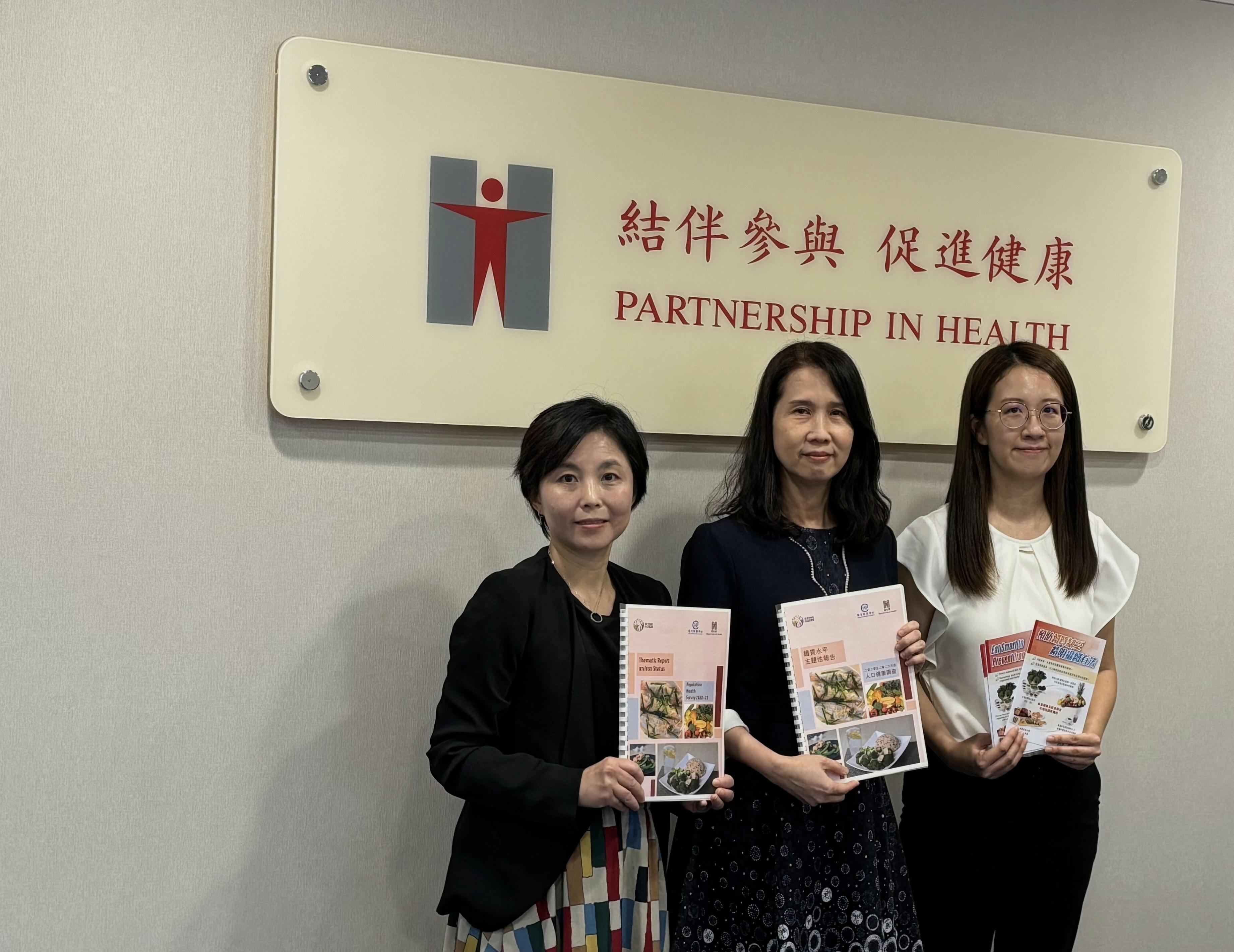DH releases Thematic Report on Iron Status (Population Health Survey 2020-22) (with photo)
******************************************************************************************
Conducted between November 2020 and February 2022, the PHS 2020-22 comprises a household survey and a health examination. With regard to the health examination, apart from the earlier announced iodine status, biochemical testing of blood for haemoglobin (Hb) and serum ferritin (SF) were included for the first time to assess the iron status of the local population (aged 15 to 84).
A spokesman for the DH said that iron is vital for oxygen transport and cellular functions of the human body. Inadequate iron intake or excessive iron loss (e.g. during menstruation for female) can both lead to ID. A prolonged deficiency may result in iron deficiency anaemia (IDA), causing fatigue and reduced exercise tolerance, as well as affecting cognitive functions in children. IDA in early pregnancy is associated with increased risks of preterm labour, a low birthweight baby, and infant mortality.
Based on recommendations of the World Health Organization (WHO), SF was adopted as the indicator to assess the local prevalence of ID, and a cut-off value of below 15 μg/L was used for defining ID among healthy adolescents and adults. Anaemia was defined as Hb levels lower than 12 g/dL in women and lower than 13 g/dL in men according to the WHO. IDA was defined in individuals who were found to have both ID and anaemia.
The survey results revealed that the prevalence of ID among the local population aged 15 to 84 was about 5.7 per cent, whereas that for women of reproductive age (aged 15 to 49) reached 17.5 per cent. The prevalence of men and women of post-menopausal age was 0.7 per cent and 2.7 per cent respectively. Also, a remarkable difference in the prevalence of IDA between men (0.3 per cent) and women (6.4 per cent) was observed. Prevalence of IDA was higher among women of reproductive age (10.6 per cent) than women of post-menopausal age (2.1 per cent).
The ID prevalence of the local population in Hong Kong (including women of reproductive age) falls within 5.0 to 19.9 per cent (i.e. 5.7 per cent for local population and 17.5 per cent for the aforementioned women of reproductive age) and is classified as a "mild magnitude of public health problem" according to the WHO guidelines on use of ferritin concentrations to assess iron status. Also, the local findings of a higher prevalence of ID and IDA among women of reproductive age are similar to that of relevant studies in high income countries, and are believed to be due to their regular and heavy menstrual blood loss.
To follow up on the iron levels of the public, the DH has set up the Working Group on Prevention of Iron Deficiency, comprising experts from the Centre for Food Safety of the Food and Environmental Hygiene Department, the Hospital Authority, the Hong Kong College of Community Medicine, the Hong Kong College of Family Physicians, the Hong Kong College of Obstetricians and Gynaecologists, the Hong Kong College of Pathologists, the Hong Kong College of Physicians, and the Hong Kong Red Cross Blood Transfusion Service. The Working Group has reviewed the key findings of this study and the latest scientific evidence. For asymptomatic individuals at average risk of ID, there is no evidence in supporting routine screening for ID or universal iron supplementation. The following joint recommendations were made on iron intake:
In general, adequate iron intake can be achieved by a healthy balanced diet with iron-rich food. Women of reproductive age have a higher risk of iron loss during menstruation and hence a higher daily requirement for iron. They should pay particular attention to their diet to ensure adequate iron intake.
1. Consume iron-rich food:
- Eat a moderate amount of meat, fish and seafood. Animal-based iron-rich food contains haem iron which can be absorbed easily;
- Eat more dark green vegetables and beans. Plant-based iron-rich food contains non-haem iron which is less readily absorbable, and its absorption is affected by other foods and drinks in the diet; and
- Iron-fortified cereals are also good sources of iron.
2. Consume adequate fruit and vegetables:
- Consume vitamin C-rich fruit and vegetables to enhance absorption of iron from plant sources.
3. Reduce tea or coffee with meals:
- Try to avoid drinking tea or coffee within one to two hours after meals as these beverages can reduce iron absorption. Plain water or water added with lemon is a better choice as a beverage for meals.
4. Additional measures for those at higher risk of iron deficiency:
- People at risk of iron deficiency (including women of reproductive age with heavy menstrual periods, pregnant women, persons on restrictive diets, persons with gastrointestinal disorders and/or having previous gastrointestinal surgery, frequent blood donors, etc) may seek healthcare professionals' advice on management of their health conditions and individual needs for taking iron supplements. Please note: an iron supplement with too much iron can be harmful.
The Government appeals to all doctors, including family doctors, to promote a healthy balanced diet with iron-rich food to citizens. For more information on iron-rich food and heavy menstrual bleeding, please visit the EatSmart Restaurant Star + Campaign Thematic website of the DH, the "All about periods" and the "Eat Smart to Prevent Iron Deficiency" websites of the Family Health Service of the DH, as well as the "Heavy Menstrual Bleeding and Iron Deficiency Anaemia" website of the DH's Student Health Service.
Please visit www.chp.gov.hk/en/features/37474.html for the Thematic Report on Iron Status and the Joint Recommendation on Iron Intake for the Public Particularly for Women of Reproductive Age.
Ends/Tuesday, July 16, 2024
Issued at HKT 17:10
Issued at HKT 17:10
NNNN





